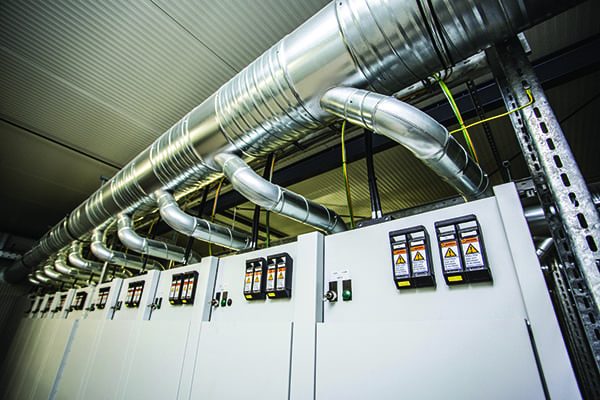EV Batteries Repurposed for Energy Storage
Daimler, the German automotive company best-known for the Mercedes-Benz line of vehicles, obviously knows a bit about cars. So perhaps it’s no surprise its subsidiary, Mercedes-Benz Energy, is using vehicle technology to repurpose a retired coal plant, as it takes its knowledge of electric vehicles (EVs) and moves into energy storage. Daimler, along with GETEC ENERGIE AG and technology company The Mobility House AG, is turning the old Mark-E coal-fired plant in Elverlingsen, Germany, into an energy storage facility, using nearly 2,000 modules from EV battery packs made by Daimler’s Accumotive subsidiary (Figure 1).
Mercedes-Benz Energy has launched other projects utilizing battery packs for EVs for stationary energy storage. The company in June said the Elverlingsen project, along with a battery storage facility in Lünen (12.8 MWh of energy capacity, opened in 2016) and a spare parts storage facility in Hanover (17.4 MWh, opened in 2017), means that “40 MWh of energy will [soon] be connected to the grid.” The facility in Hanover, in the Herrenhausen district, includes about 3,000 battery modules. The project is managed by Enercity, a German electric utility.
The Elverlingsen project has 8.96 MW of installed capacity (9.8 MWh of energy capacity), with 1,920 battery modules installed at the former 330-MW coal plant, which shut down in March (a second 200-MW coal-fired unit was retired in 2014). Daimler in a statement said, “The large storage plant is therefore a symbol for the transformation in the storage and use of energy, away from fossil electricity grid supply and towards a sustainable extension of the e-mobility value chain that reduces CO2.” Daimler said the project would be used to balance power on the German grid, which has continued to add more intermittent renewable energy in recent years. “In the event of increasing fluctuations in electricity feed-in from renewable energies such as wind and solar energy, such storage units help to ensure optimum balancing of the grid frequency, which must be constantly stabilised,” the company said in a statement. “With their storage capacity, they balance the energy fluctuations with virtually no losses—a task which is currently predominantly performed by fast-rotating turbines, rotating masses in large power stations.”
Several automakers are working on ways to use the development of battery technology in not just EVs but also other products. Tesla’s “Tesla Energy” division began the trend in 2015 with its Powerwall. Other automakers moving into the energy space include Nissan, Renault, and BMW, which teamed with Sweden’s Vattenfall on a 2.8-MWh energy storage facility using batteries from more than 100 BMW-model EVs. The technology group Wärtsilä and Hyundai Motor Group in late June signed a partnership agreement to utilize EV batteries in energy storage, combining Hyundai’s expansion in EVs with Wärtsilä’s growing energy business, which includes advanced energy storage technologies and software through Wärtsilä’s acquisition of Greensmith Energy.
Daimler said the modules being used at Elverlingsen otherwise would be used in about 600 third-generation EVs. The company said the “active” storage of the lithium-ion battery modules at Elverlingsen “is like a fountain of youth for the battery systems used for electric mobility. To be usable as a replacement, a battery needs regular cycling during the storage period—deliberate, battery-conserving charging and discharging. This prevents exhaustive discharge, which can lead to a battery defect. At the same time, the partners are reacting efficiently to the growing demands to compensate grid fluctuations and are presenting an attractive business case, as the systems provide a service on the German market for primary balancing power before they are potentially used in electric vehicles from Daimler AG. A maximum reaction time of 30 seconds is required to ensure grid stability. The storage system in Elverlingsen reacts much faster—within milliseconds. The requirements for frequency control and the compensation of grid fluctuations are far exceeded here.” The modules will be housed in a hall on the edge of the former coal plant.
—Darrell Proctor is a POWER associate editor.
